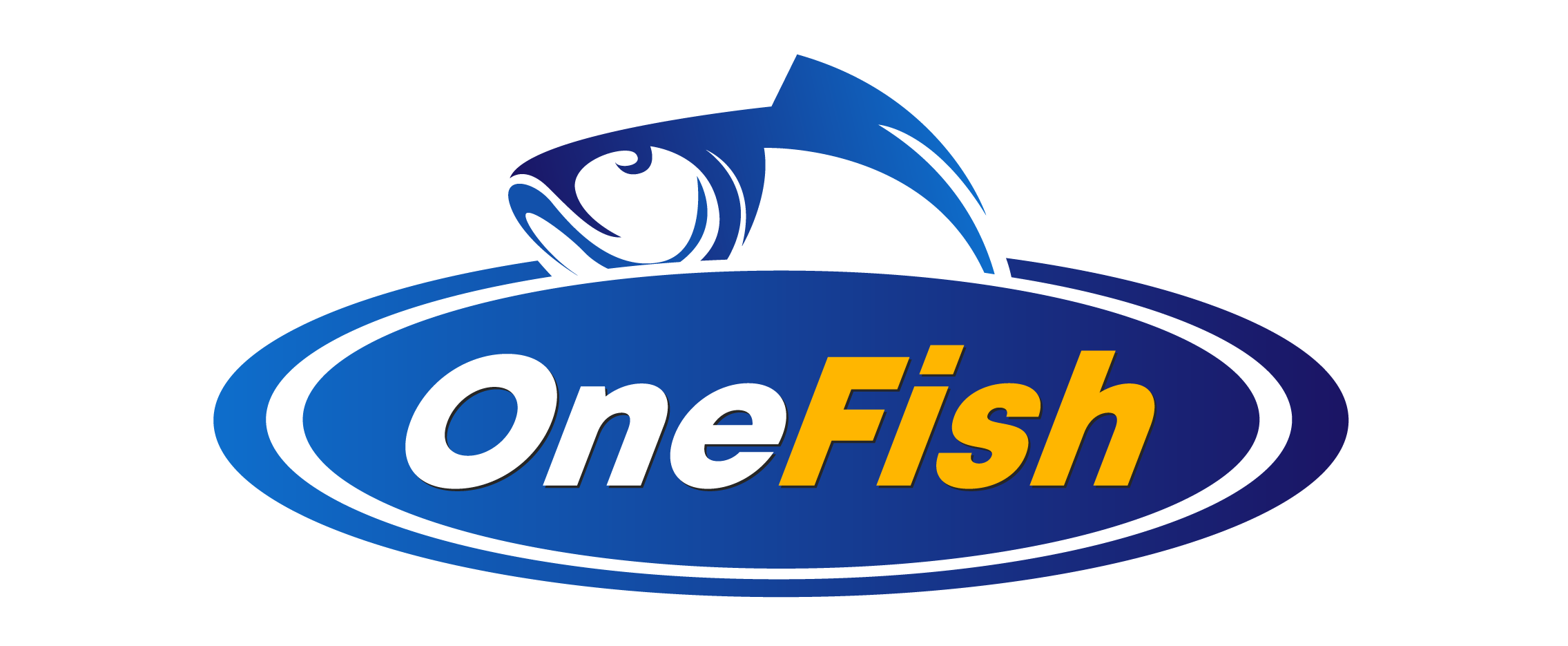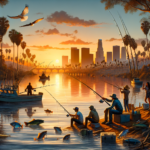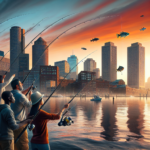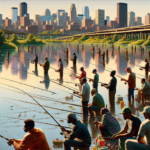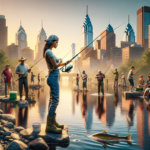Fishing in Salt Lake City: Urban Lakes, Reservoirs, and Mountain Streams

Introduction
Did you know that Salt Lake City, nestled in the heart of Utah, offers some of the most diverse and accessible fishing opportunities in the United States? From urban lakes and sprawling reservoirs to pristine mountain streams, this city is a hidden gem for anglers of all skill levels. In this article, we will explore the best fishing spots in and around Salt Lake City, delve into the techniques and gear you’ll need, and provide tips for making the most of your fishing adventures.
Whether you’re a seasoned angler looking to explore new waters or a beginner eager to cast your first line, understanding the unique fishing landscape of Salt Lake City can enhance your experience. This guide will cover everything from the historical significance of fishing in the area to the best times and places to fish, ensuring you’re well-prepared for a successful outing.
Background/Context
Historical or Cultural Significance
Fishing has long been a part of Utah’s cultural heritage. Native American tribes, such as the Ute and Shoshone, relied on the region’s rivers and lakes for sustenance. With the arrival of European settlers in the 19th century, fishing became both a recreational activity and a means of survival. Today, fishing remains a popular pastime, with numerous local events and tournaments celebrating this age-old tradition.
Geographical Overview
Salt Lake City is uniquely positioned between the Great Salt Lake to the northwest and the Wasatch Mountain Range to the east. This diverse geography creates a variety of fishing environments, from the brackish waters of the Great Salt Lake to the clear, cold streams of the mountains. The region experiences four distinct seasons, each offering different fishing opportunities and challenges.
Key Points/Details
Fishing Techniques
Technique Overview
In Salt Lake City, anglers can employ a range of fishing techniques, including fly fishing, spin fishing, and baitcasting. Fly fishing is particularly popular in the mountain streams, where trout are abundant. Spin fishing and baitcasting are commonly used in urban lakes and reservoirs, targeting species like bass, catfish, and perch.
When and Where to Use
Fly fishing is best suited for the mountain streams during the spring and fall when water levels are optimal, and insect hatches are frequent. Spin fishing and baitcasting can be effective year-round in urban lakes and reservoirs, though early morning and late evening are typically the best times to fish.
Recommended Gear
- Fly Fishing: 9-foot, 5-weight rod, floating line, and a variety of dry flies, nymphs, and streamers.
- Spin Fishing: Medium-action rod, spinning reel, 6-10 lb test line, and a selection of lures such as spinners, crankbaits, and soft plastics.
- Baitcasting: Medium-heavy rod, baitcasting reel, 10-20 lb test line, and live bait or artificial lures like jigs and swimbaits.
Species Information
Species Overview
Salt Lake City’s waters are home to a variety of fish species. In urban lakes and reservoirs, you can find largemouth bass, smallmouth bass, catfish, bluegill, and perch. The mountain streams are renowned for their populations of rainbow trout, brown trout, and cutthroat trout.
Best Practices
For bass, use lures that mimic their natural prey, such as minnows and crayfish. Catfish are often caught using stink baits or cut bait. Trout fishing in streams requires a more delicate approach, with light lines and small, natural-looking flies or lures.
Location Information
Top Fishing Spots
- Liberty Park Pond: An urban oasis offering easy access and a variety of fish species, including trout and catfish.
- Jordanelle Reservoir: Located just outside the city, this reservoir is known for its bass and trout fishing.
- Provo River: A renowned fly fishing destination, particularly for its large brown trout.
- Big Cottonwood Creek: A mountain stream offering excellent trout fishing in a scenic setting.
Regulations and Licenses
Utah requires all anglers aged 12 and older to have a valid fishing license. Licenses can be purchased online or at local sporting goods stores. Be sure to check the Utah Division of Wildlife Resources website for specific regulations, including catch limits and seasonal restrictions.
Seasonal Considerations
Seasonal Variations
Fishing conditions in Salt Lake City vary significantly with the seasons. Spring and fall are ideal for trout fishing in mountain streams, while summer is best for bass and catfish in urban lakes and reservoirs. Winter can be challenging, but ice fishing is popular on many of the region’s reservoirs.
Best Times to Fish
The best times to fish are typically early morning and late evening when fish are most active. Seasonal peaks include spring and fall for trout and summer for warm-water species like bass and catfish.
Events and Tournaments
Event Overview
Salt Lake City hosts several fishing events and tournaments throughout the year. The Utah Bass Federation holds annual bass fishing tournaments at local reservoirs, while the Wasatch Fly Tying and Fly Fishing Expo offers workshops and competitions for fly anglers.
Preparation Tips
To prepare for a fishing event, ensure your gear is in top condition, practice your casting techniques, and familiarize yourself with the event rules and the specific water body where the event will be held.
Tips and Best Practices
General Tips
- Always check local fishing reports for the latest information on fish activity and water conditions.
- Practice catch and release to help maintain healthy fish populations.
- Be patient and persistent; fishing success often comes with time and experience.
Avoid Common Mistakes
- Using the wrong gear for the target species or fishing environment.
- Ignoring local regulations and catch limits.
- Fishing during the wrong times of day or seasons.
Advanced Techniques
- Mastering the art of fly tying to create custom flies that match local insect hatches.
- Using electronics like fish finders to locate fish in larger bodies of water.
- Employing advanced casting techniques, such as the double haul for fly fishing or flipping and pitching for bass fishing.
Gear and Equipment Recommendations
Essential Gear
- Fishing rod and reel appropriate for your chosen technique.
- Fishing line suited to the target species and environment.
- A variety of lures, flies, or bait.
- Tackle box with essential tools like pliers, line cutters, and a hook remover.
- Fishing license and any required permits.
Optional Gear/Upgrades
- Waders for stream fishing.
- Polarized sunglasses to reduce glare and see fish more clearly.
- Fish finder or other electronic aids.
- High-quality cooler for storing your catch.
Where to Buy or Rent
Local shops like Fish Tech Outfitters and Sportsman’s Warehouse offer a wide range of fishing gear and equipment. Online retailers such as Bass Pro Shops and Cabela’s also provide extensive selections and convenient shipping options.
Safety and Conservation
Safety Tips
- Always wear a life jacket when fishing from a boat or near deep water.
- Be aware of weather conditions and avoid fishing during storms or extreme weather.
- Carry a first aid kit and know basic first aid procedures.
- Inform someone of your fishing plans and expected return time.
Conservation Practices
- Practice catch and release, especially for non-native or overfished species.
- Respect local wildlife and habitats by minimizing your impact on the environment.
- Follow all local regulations and guidelines to help preserve fish populations.
Planning Your Trip
Accommodations
Salt Lake City offers a range of accommodations, from budget-friendly motels to luxury hotels. For those looking to stay closer to nature, campgrounds are available near many of the top fishing spots, such as Jordanelle State Park and Big Cottonwood Canyon.
Travel Tips
Salt Lake City is easily accessible by car, with major highways connecting it to surrounding states. The Salt Lake City International Airport offers convenient flights for those traveling from farther away. Renting a car is recommended for exploring the various fishing locations.
Additional Activities
When you’re not fishing, Salt Lake City offers a wealth of activities, including hiking, mountain biking, and visiting cultural attractions like the Utah Museum of Fine Arts and the Hogle Zoo. The city’s vibrant dining scene also provides plenty of options for refueling after a day on the water.
Frequently Asked Questions (FAQs)
Do I need a fishing license to fish in Salt Lake City?
Yes, anyone aged 12 and older needs a valid Utah fishing license. Licenses can be purchased online or at local retailers.
What are the best times of year to fish in Salt Lake City?
Spring and fall are ideal for trout fishing in mountain streams, while summer is best for bass and catfish in urban lakes and reservoirs. Winter offers opportunities for ice fishing.
What types of fish can I catch in Salt Lake City?
Common species include largemouth bass, smallmouth bass, catfish, bluegill, perch, rainbow trout, brown trout, and cutthroat trout.
Are there any local fishing events or tournaments?
Yes, Salt Lake City hosts several fishing events and tournaments throughout the year, including bass fishing tournaments and fly fishing expos.
Conclusion
Salt Lake City offers a diverse and rewarding fishing experience, with opportunities ranging from urban lakes to mountain streams. By understanding the best techniques, gear, and locations, you can make the most of your fishing adventures in this unique region. Whether you’re targeting bass in a local reservoir or fly fishing for trout in a pristine stream, the tips and information provided in this guide will help you succeed. So grab your gear, get your license, and head out to explore the fantastic fishing opportunities that Salt Lake City has to offer.
